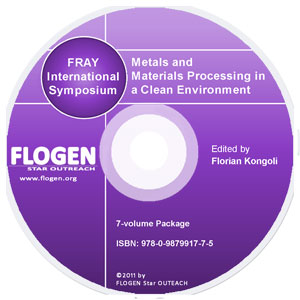
CD shopping page |
2011-Sustainable Industrial Processing Summit
|
| Editors: | Florian K |
| Publisher: | Flogen Star OUTREACH |
| Publication Year: | 2012 |
| Pages: | 708 pages |
| ISBN: | 978-0-9879917-1-3 |
| ISSN: | 2291-1227 (Metals and Materials Processing in a Clean Environment Series) |
The Sticking Behavior Caused By Sintering In Gas Fluidization Reduction Of Hematite
Wang Zhi1; Zhong Yiwei1; Gong xuzhong1; Guo Zhancheng1;1INSTITUTE OF PROCESS ENGINEERING, CHINESE ACADEMY, Beijing, China;
Type of Paper: Regular
Id Paper: 440
Topic: 5
Abstract:
The sticking of hematite and iron powder during fluidization process was investigated using a visual fluidized bed reactor. In addition, the fluidizing performance of some other typical crystalline materials was tested. The results showed that most of the materials defluidize in reducing atmosphere. The High-temperature defluidization occurred only when Fe2O3 particles were covered with iron precipitated above a certain temperature, at which the fluidizing performance of particles undergone abrupt changes. The higher fluidization temperature, the less iron was needed to stick. This suggested that the reduced products covered with iron transformed into cohesive particles (Geldart group C), which formed self-agglomeration above minimum sintering temperature. Due to iron surface generation, the inter-particle force arising from sintering of iron-iron contact should be taken into consideration. Especially, iron surfaces with nano/micro structures favored the formation of agglomeration of particles, because of their lower melting point. By comparison, the sticking temperature of hematite was always lower than that of iron powder in the same sizes. The interface reaction, which changed the surface structure and improved the surface diffusion of atoms, had a promotive effect on agglomeration and subsequent defluidization. Experimental certified the sticking was also associated with the type of crystal structure of materials. The order of sticking temperature was metallic >ionic > atomic crystal from high to low. For metals, one with lower melting point had a lower sticking temperature. Especially, for Fe, Cu and Ni, the ratio between sticking temperature and melting point was almost constant at 0.5~0.55.